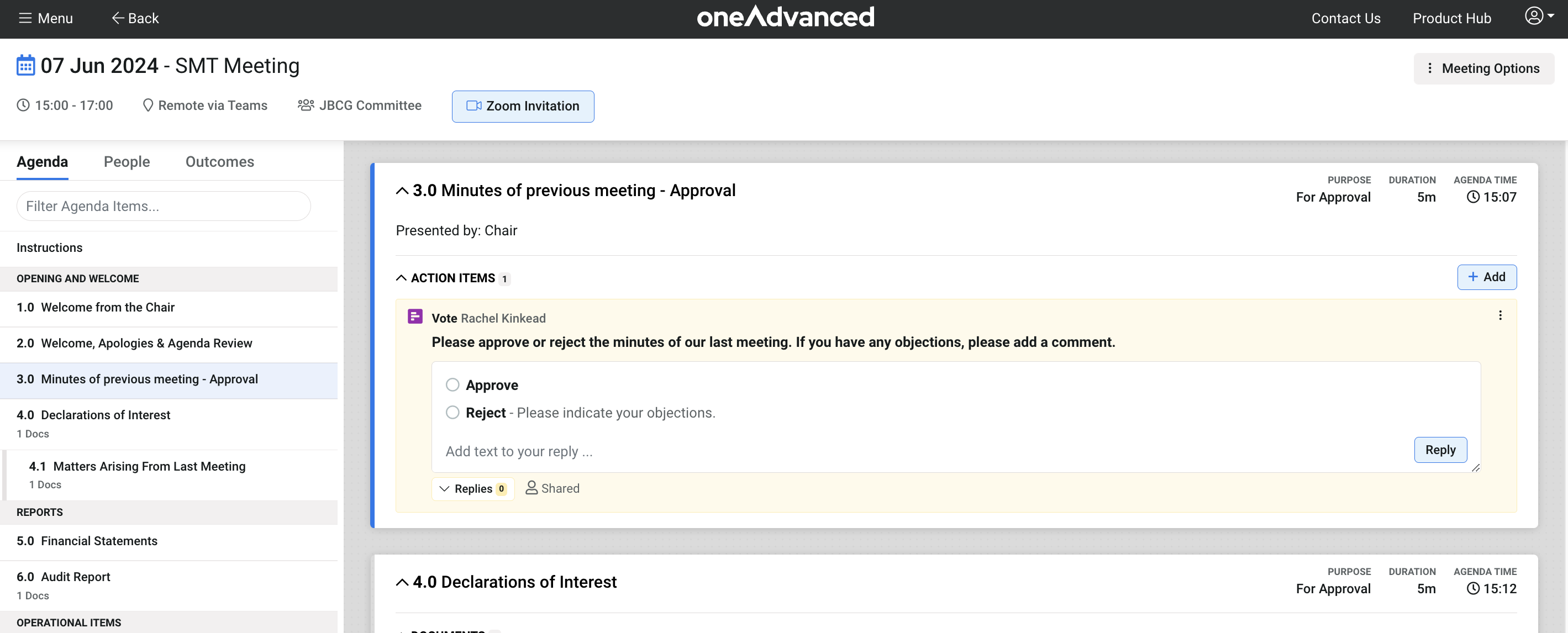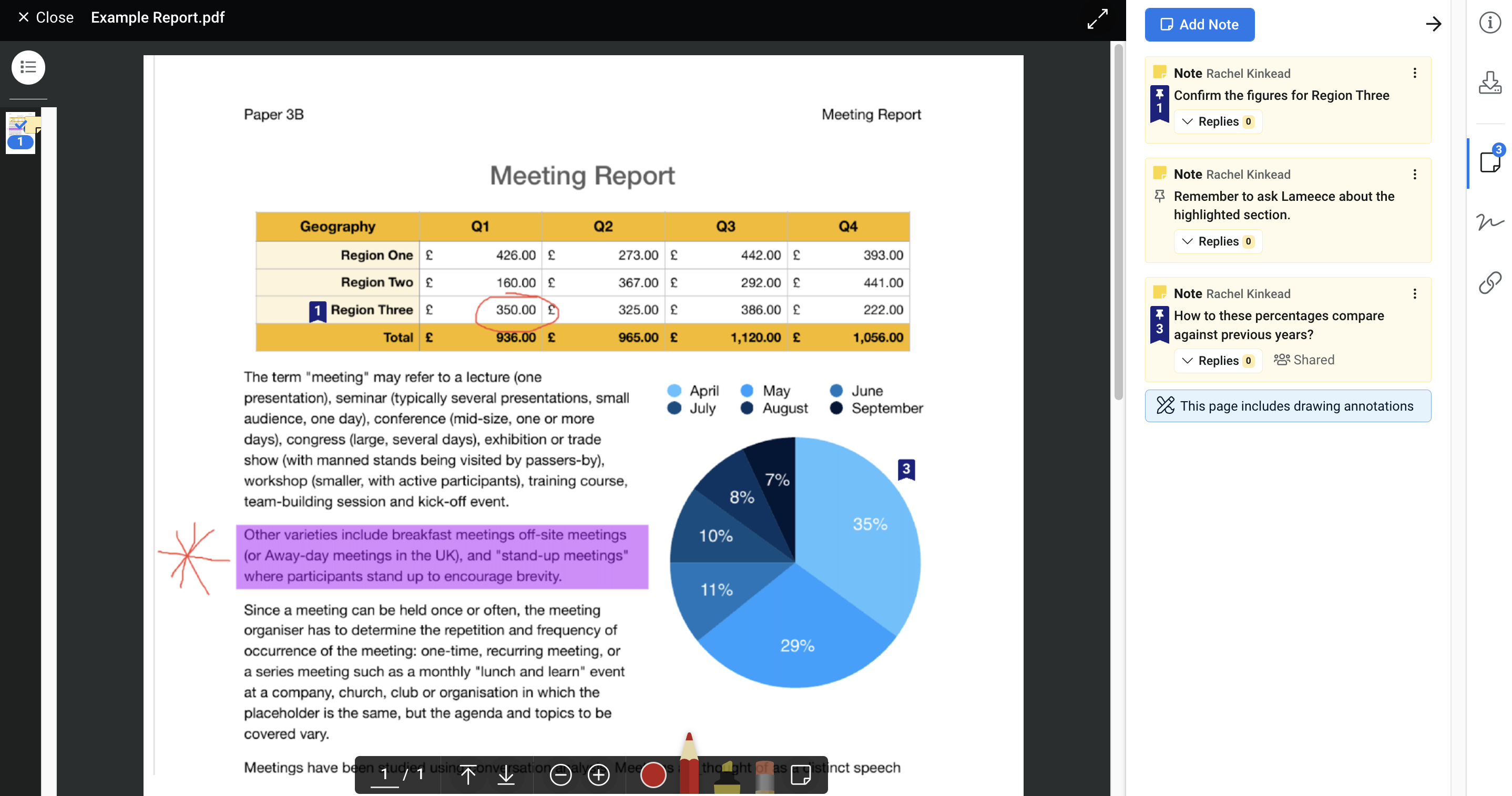A Summary for Meeting Attendees
An Introduction to Meetings for Attendees. The Meetings element of the Governance & Risk platform enables meeting Attendees to read their meeting papers, annotate, create and share notes, discuss, de…
An Introduction to Meetings for Attendees
The Meetings element of the Governance & Risk platform enables meeting Attendees to read their meeting papers, annotate, create and share notes, discuss, debate and track actions.
The system also includes a shared document library for all your policies, procedures and governance documents, a comprehensive search facility, and simple permissions management to ensure the right people see the right information.
Home Screen
The Home screen displays your upcoming meetings, actions and alerts.
You also have one-click access to the main areas of the system including Meetings, Risks, Goals, Actions & Resources.

Meetings Calendar
As well as the Upcoming Meetings list on your Home Screen, you can also view these and your previous meetings via the Calendar view. The calendar view lets you see all of your past and future meetings, colour-coded by Committee. You can browse back and forward through the calendar and click on a meeting to open it.

Meeting Agenda
Click into a meeting via your Upcoming Meetings list, Calendar view, or the Meeting invitation email to view the Agenda. Meeting agendas are easy to read and navigate, with a summary on the left and the detail view on the right.
Each agenda item has a title, description and as many attached documents as required. The Meeting Organiser(s) can optionally add a duration and a purpose to each agenda item, helping to keep meetings on-track.
Notes can be added to any item, and are private to you, unless you choose to share them.

Sharing a note can be the start of a discussion to clarify a point, ask for more information or highlight an issue in the meeting pack. You can share a note when you create it, or you can select Edit Note to share it when you're ready. You can choose to share the note with one or more individual, or for example all attendees.

Votes
As part of your meeting preparation, or during the meeting itself, you can complete any Votes the meeting Organiser has included you in. You'll see these in the meeting agenda and the meeting Organiser may also have sent you an email advising you about the vote. Select your reply and add a comment if you need to.

Actions
Actions assigned to you can be accessed via your Home screen, but you can also add an Action yourself as a handy reminder to complete a task.

Document Notes & Annotations
Documents such as minutes, reports, and presentations can be added to the agenda as PDFs or MS Office Documents. These can be read, annotated, highlighted and drawn on using simple tools in preparation for the meeting.
Notes and annotations are helpful during meeting preparation and visible to you during the meeting as well.
Like the notes you add to an agenda item, any document notes are private to you, unless you share them.

Things to do
Before the Meeting
- Confirm your attendance using the options in your meeting invitation email (if included). You can also confirm this within the meeting.
- Read through the agenda and any documents included.
- Add notes against the applicable agenda item or document, sharing these as needed.
- Complete any votes you're included on.
During the Meeting
- Follow the meeting Chairperson as they navigate through the agenda
- Add notes or document annotations if you need to.
- Add any Declarations of Interest (via Notes) if applicable.
- Respond to any votes or notes shared with you.
- Create Actions as they arise.
After the Meeting
- Review and complete any Actions assigned to you.
Was this article useful?
A Quick Guide for Meeting Organisers
Groups & Committees